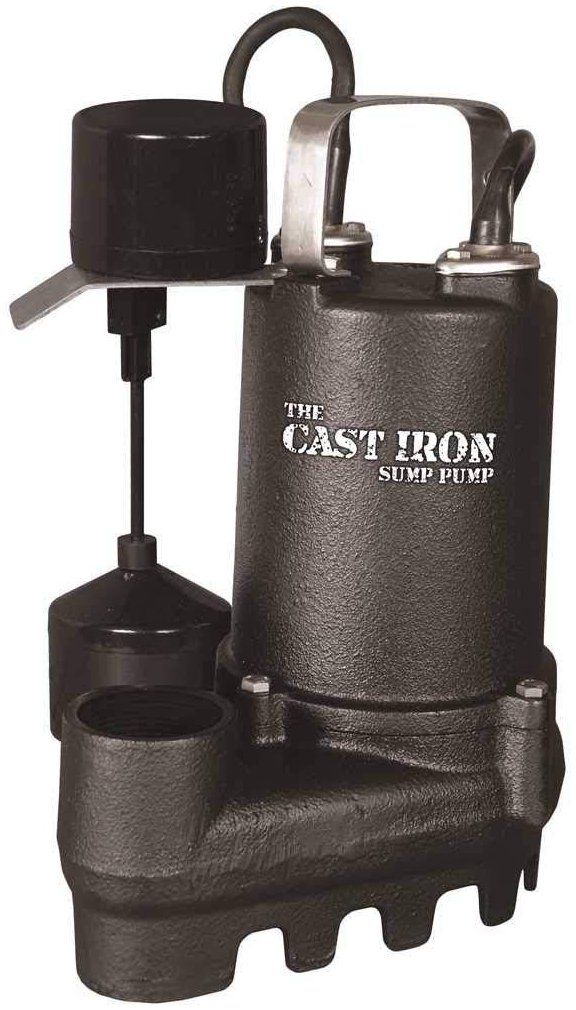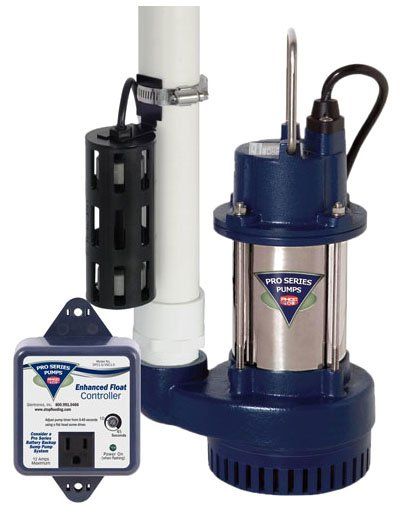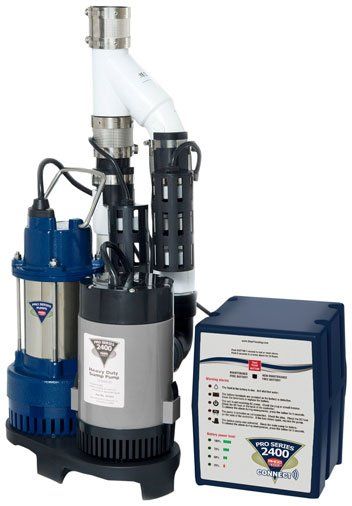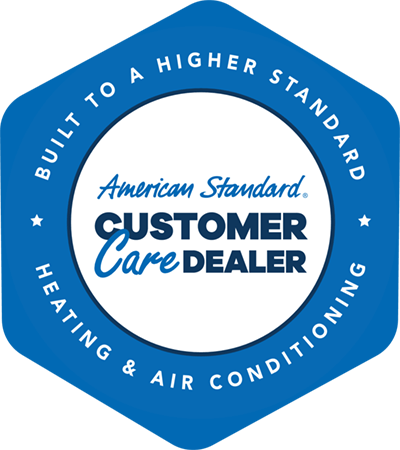Call or Text (216) 545-1776 to schedule service or installation
Blog | Financing | Specials | Now Hiring | Service Plans
Protect Your Home from Flooding Disasters with a Sump Pump
Disaster Prevention
Dry Basement
Peace of Mind
Why Do You Need a Sump Pump System?
It’s raining, and you realize something’s wrong. You just stepped in a puddle of water inside your basement.
The familiar “woosh” of your sump pump is missing. Now what?
Common Sump Pump Issues and Solutions
Sump pump failure can lead to a host of problems. Here are some common issues and solutions:
- Sump pump replacement: Replace an old or damaged sump pump to ensure optimal performance.
- Sump pump repair: Address minor issues, such as a stuck float switch, to keep your sump pump functioning properly.
- Sump pump installation: Proper installation is crucial to guarantee the effectiveness of your sump pump system.
- Sump pump cost: Consider both the initial cost and long-term expenses when choosing a sump pump system.
Essential Sump Pump Maintenance and Additional Features
Regular maintenance and additional features can enhance the reliability of your sump pump system:
- Sump pump maintenance: Schedule routine inspections and cleaning to prolong the life of your sump pump.
- Sump pump battery backup: Install a battery backup system to ensure your sump pump operates during power outages.
- Sump pump alarm: Use an alarm to alert you of potential issues, such as a malfunction or high water levels.
- Sump pump pit: Keep the sump pump pit clean and clear of debris to prevent clogging and ensure efficient operation.
Proper Sump Pump Drainage and Inspection
Effective drainage and regular inspection are key to a well-functioning sump pump system:
- Sump pump drain: Ensure the drain line is clear and free of obstructions to allow for effective water removal.
- Sump pump inspection: Conduct regular inspections to identify and address any issues before they become major problems.
- Sump pump cleaning: Clean the sump pump and surrounding area regularly to ensure optimal performance.
Why Do You Need a Sump Pump System?
A sump pump system is an essential piece of equipment for protecting your home from potential flooding disasters. By investing in a reliable sump pump, you can have peace of mind knowing that your foundation, flooring, furnishings, and other valuables are safe from the devastating effects of water damage. Don't wait for the next heavy rainstorm or broken pipe to catch you off guard—prepare your home with a sump pump system today, and consider sump pump maintenance, battery backup, alarms, and proper drainage to maximize its effectiveness.
Select the Sump Pump System That’s Best for You
Sump/Effluent Pump with
Built-In Vertical Switch
Features a reliable built-in vertical switch, a cast iron 6-blade vortex impeller, and a removable strainer
Sump Pump & Dual Float with Enhanced Controller
Features two float switches, a low power alarm, and remote connection capabilities for home automation
Combination System Battery Backup & Sump Pump
Features a caged float switch, monitoring controller, and a maintenance-free battery
GOOD CHOICE: CIS-33V
Sump/Effluent Pump with Built-In Vertical Switch
- Pumps 3,200 GPH (53 GPM) at 10 ft. lift
- Cast iron construction
- 1/3 HP energy efficient PSC motor
- Reliable built-in vertical switch
- Cast iron 6-blade vortex impeller
- Pumps solids up to 1/2"
- Removable strainer
- 3-year warranty
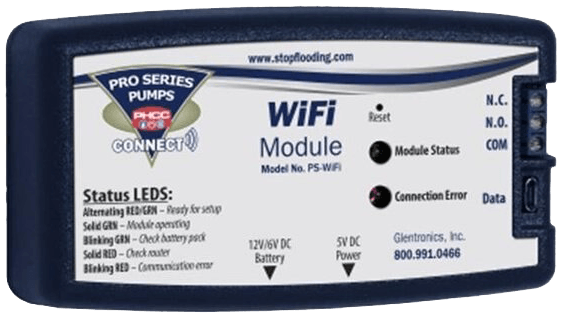
ADDITIONAL ACCESSORY
WiFi Module
- Sends email or text notifications and status alerts to your phone, tablet, or computer
- No monthly fee
- Companion app available
BETTER CHOICE: S3033-DFC2
Sump Pump & Dual Float with Enhanced Controller
Pump:
- Pumps 3,000 GPH (50 GPM) at 10 ft. lift
- Cast iron / stainless steel construction
- 1/3 HP energy efficient PSC motor
- 5-year warranty
Deluxe Controller:
- Two float switches for added protection
- Sounds an alarm and alerts when power detected or the battery is low
- USB Data Port and Remote Terminal connect to external devices such as the Pro Series Pumps CONNECT
modules, home automation systems or other - Exercises the pump weekly to extend pump life
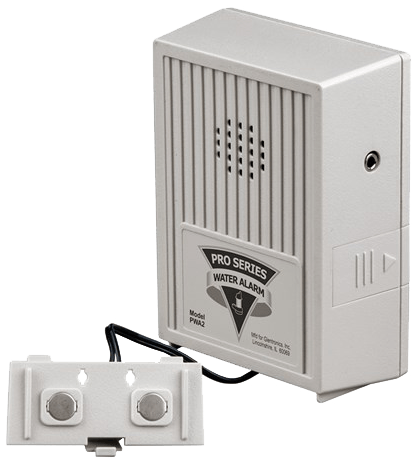
ADDITIONAL ACCESSORY
Water Alarm
- Detects leaks before they become a bigger problem
- Minimizes risk of water damage
BEST CHOICE: PS-C33
Combination System Battery Backup & Sump Pump
Primary Pump:
- Pumps 3,000 GPH (50 GPM) at 10 ft. lift
- Cast iron / stainless steel construction
- 1/3 HP energy efficient PSC motor
Backup Pump:
- Pumps 2,400 GPH (40 GPM) at 10 ft. lift
- Unique monitoring controller detects irregularities, sounds an alarm, pinpoints problems and solutions on control panel
- Runs pump weekly to test for proper operation and sends an alert if there is a pump problem
- Caged float switch for added durability
- Receive notifications about your Pro Series 2400 backup sump pump system while away from home using a Pro Series CONNECT module
- Designed with a maintenance-free battery
- 4-year warranty
-
How long do sump pumps last?
Sump pumps typically last between 7 to 10 years, but their lifespan can vary depending on factors such as usage, maintenance, and the quality of the pump. Some pumps may last longer, even up to 15 years, while others may fail earlier. To prolong the life of your sump pump, it is important to perform regular maintenance, inspect it for signs of wear or damage, and replace worn parts as needed. Additionally, investing in a high-quality pump and having it installed correctly can also help extend its lifespan.
-
How does a sump pump work?
Sump pumps are designed to remove accumulated water from a sump pit or basin, typically found in basements or crawl spaces, and prevent water damage to a building's foundation. They work through the following process:
Sump pit or basin: Water enters the sump pit or basin through drains, perimeter tiles, or natural groundwater seepage. The pit is usually located at the lowest point of the basement or crawl space to ensure that water naturally flows towards it.
Float switch or pressure sensor: A float switch or pressure sensor is activated as water fills the sump pit. This switch triggers the sump pump to turn on once the water reaches a certain level.
Motor activation: When the float switch or pressure sensor is activated, the pump's motor turns on. The motor drives an impeller, which is a rotating device that pushes the water out of the sump pit.
Water removal: The impeller forces water through a discharge pipe connected to the pump. The water is then directed away from the building's foundation to a safe distance, typically to a storm drain or a designated drainage area. This helps prevent water damage and flooding.
Deactivation: Once the water level in the sump pit drops below a certain point, the float switch or pressure sensor deactivates the pump, turning it off until the water level rises again.
To ensure the sump pump operates efficiently, it's essential to perform regular maintenance, such as checking for debris in the sump pit, inspecting the discharge pipe for clogs, and testing the float switch or pressure sensor for proper functioning.
-
I just moved into a new home, and it has a sump pump. What do I need to know?
Sump pumps are like insurance. You forget about it until you need it, and they are at work 24/7 protecting your home, foundation, and possessions from water damage. Many homes require submersible sump pumps for everyday use, especially in rainy climates or where the area in which the home sits has the potential for flooding. A submersible sump pump is placed underwater in your sump pump basin.
-
Why do you need a sump pump?
A sump pump system prevents flooding, protects against sewer backups, and helps prevent foundation damage to your home. A sump pump removes water from the space below and surrounding the foundation of your house. A sump pump pumps water out of the basement and into the sewer system or away from the home to mitigate flooding and damage.
-
Who should install my sump pump?
You can install a sump pump yourself, but should you? Sump pump installation can be messy and requires that you work with water and electricity. A sump pump should be installed by a professional plumbing and electrical contractor. They have the knowledge and experience to get the job done safely, efficiently, and reliably. Professional electricians and plumbers have access to all the necessary tools and equipment required for proper installation.
-
Should my sump pump be plugged in constantly?
Electric sump pumps need to be plugged into a primary power source such as your home’s electrical system. Submersible sump pumps require a constant source of power from an independent breaker in your home’s electrical system. In the event of a power failure, it’s best to install a battery backup system.
-
What is a backup sump pump system?
A backup sump pump is a second, smaller pump that can be used in the event that your primary pump fails. If the power goes out, your main AC pump will not run, and your basement will flood.
Backup sump pump systems will pump intermittently for days, providing a secondary pumping source. For an increased run time, larger backup models can handle extra batteries for extended pumping time.
-
Do I need a backup sump pump?
A sump pump can fail due to:
- An electrical short (typically due to an overloaded breaker)
- A power outage
- When the pump is clogged with debris
- If the float switch on the main pump gets stuck or fails
- If the discharge pipe in your main pump is clogged or frozen, or if the sewer is full
- When the water contains soap, which can ruin the internal workings of the pump
Your sump pump should be on an independent breaker. It should also be directly plugged into a grounded wall outlet.
-
Do sump pumps come with a warranty?
Most sump pumps come with a warranty. If you find one that doesn’t — take our word for it — don’t buy it. A warranty is a lifeline to the manufacturer. You should only buy a pump with a warranty and have it installed by a licensed contractor.
-
How many gallons per hour can a sump pump handle?
It’s not about horsepower, it’s about how many gallons per minute (GPM) or gallons per hour (GPH) the sump pump can handle. The sump pumps we recommend have a minimum GPM rating of 50.
-
What are the types of float switches for sump pumps?
- Tethered switch: This is for larger sump pits, and it allows the pump to switch off for cooling periods, using less electricity and causing less wear.
- Vertical switch: This is for narrow, shallow sump pits that don’t collect too much water and won’t overtax a pump that runs all the time.
- Electronic switch: Great for narrow sump pits, this is a perfect choice if you want a pump that has a depth alarm, but if your soapy laundry or car wash water drains into the pit, it will fry the electronics, making this a bad choice. Know what your runoff situation is before choosing your switch.
- Diaphragm switch: Used most by professionals, but also the most expensive option. This type of pump works based on the water pressure of the space. While it is the most expensive option, it also doesn’t get stuck which is a common issue among other pumps.
Don’t regret calling the wrong company for heating, cooling, plumbing, or electrical services. Make the Smart Choice and call Gorjanc Home Services at (216) 545-1776.
Gorjanc Home Services is Northeast Ohio’s Smart Choice for heating, cooling, plumbing, and electrical service since 1963.
OH Lic# 18275
